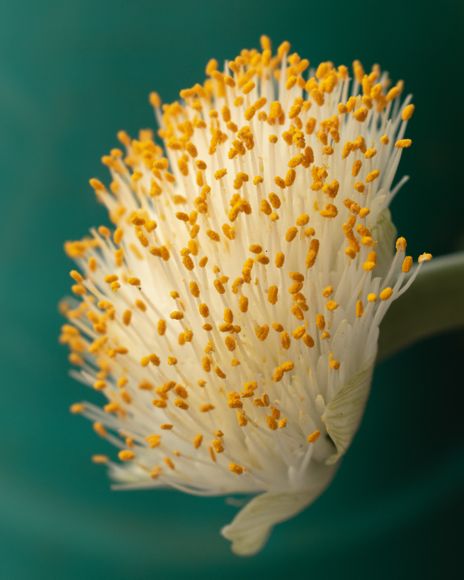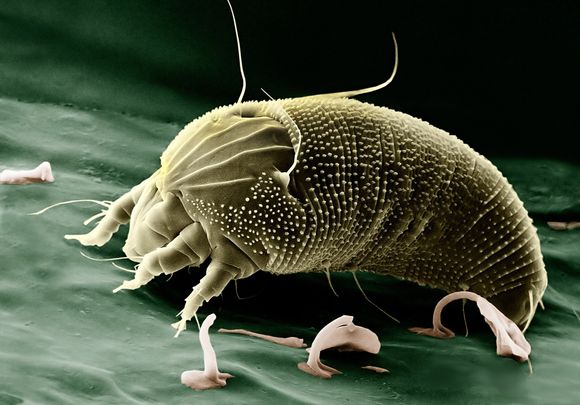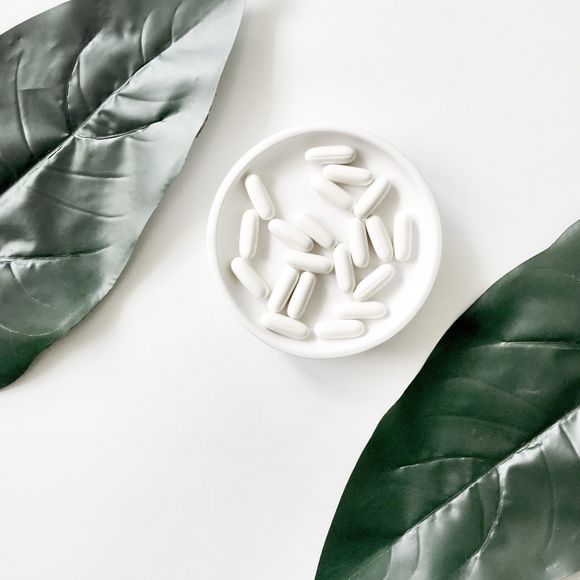Author: Rositsa Tashkova, Master of Molecular biology and Microbiology
Spring is coming and for some of us, it brings about some tedious experiences, instead of joy and vitality from observing nature being reborn. Hay fever, or also called allergic rhinitis, is annoying and exhausting. We have no choice: we are once again looking for effective treatment as we try to find out what is causing it.
What causes hay fever
It is interesting that the word "hay fever" derives from the outdated and misconception that it was caused by the smell of freshly mowed hay [ref. 1].
Today it is known that hay fever can be caused by exposure to a variety of allergens - household dust, mites, hair and particles of dead skin from pets, cigarette smoke, exhaust gases from cars, perfumes, cockroaches [ref. 2], mold and mold. Hay fever is the most common allergic reaction and affects the quality of life of too many people worldwide.
There are two types of allergic rhinitis - seasonal and year-round. Seasonal allergic rhinitis usually occurs in spring, summer, and even autumn, when different plants bloom.

Hay fever is sometimes part of a series of allergic manifestations called atopic march. The development of these conditions usually follows a certain pattern - it begins with eczema (atopic dermatitis), followed by food allergies, then hay fever, and finally asthma. However, not all people with asthma have progressed through the atopic march, and not all people with one allergy will develop others.
What are the symptoms of allergic rhinitis
It all starts with supposedly innocent tickling in the nose, which passes into itching, and the itching - in constant sneezing. Symptoms of allergic rhinitis gradually intensify. Soon we have a torturously runny nose, the secretion running down the throat.
The mucous membrane of the nasal cavity flows, the eyes are itchy, red, and teary. Sometimes there is even puffiness around them. The throat and vocal cords can also suffer and our voice becomes hoarse, but if edema begins in the larynx, it can prove life-threatening. It is necessary to immediately seek urgent medical attention.
With a stronger allergic reaction, if measures are not taken, hay fever can lead to severe conditions such as sinusitis, otitis media (inflammation of the ear), cough, and even bronchial asthma. Bronchial asthma develops in about 60% of cases of allergic rhinitis in adults and in about 80% of children.
The constant struggle for air and poor sleep expected lead to a constant feeling of fatigue and irritability [ref. 5]. Hay fever can even prevent the person from working or studying.
What role does the immune system play in allergic rhinitis
All allergies are directly related to the activity of the immune system. It is known that for the development of allergic reactions, both environmental factors and genetic predisposition [ref. 6] play an essential role. People who have close relatives suffering from this condition are at increased risk of developing hay fever.
The usual role of the immune system is to detect and attack disease-causing microorganisms, parasites, emerging cancer cells - all that can make us sick. But an allergic reaction can be seen as confusion or "overreaction" on the part of our immune system - it begins to attack various harmless substances, considering them hostile. These are the allergens.

In our body circulate components of the immune system called antibodies (immunoglobulins or Ig) that seek and bind to strictly specific substances - antigens. When connecting an antibody to an antigen, a "battle" signal is sent and the immune system begins "war".
In the case of allergies, IgE antibodies are responsible. At some point, an allergen falls in our country and our body produces a large amount of IgE antibodies [ref. 7] that come into effect upon repeated encounter.
So all the malice that comes with hay fever is actually doing to us by our own immune system and its not entirely adequate response.
Who is at risk of developing allergic rhinitis
Allergic reactions, in general, are more characteristic of children but can occur suddenly at any moment in our lives. Usually, allergic rhinitis or hay fever manifest themselves for the first time before we are over 20 years of age (in 80% of sufferers), but a later occurrence is not excluded.
In Europe, the people least affected by the condition are people from Eastern and Central Europe, followed by the Mediterranean [ref. 8].
We were found to be less likely to suffer from hay fever if we had pets [ref. 9] in the first year of life, especially dogs.
Hay fever in children
We need to approach our children with greater care if they find themselves suffering from hay fever, as they often cannot express in words their discomfort or explain to themselves why they feel so bad. Often this makes them irritable and provokes them to "make scenes" at home or at school, where educators may not understand the true causes of the child's behavior.

One of the differences between the common cold and allergic rhinitis is the duration of the condition. While with the cold everything goes away for a few days to a week, hay fever lasts a long time. Sometimes the restless behavior of the child, caused by discomfort and irritations in the ears, nose, and throat, can be mistakenly perceived as attention deficit syndrome.
Another aspect to also take into account is the emotional [ref. 10] - often children with allergies feel different from others, which deepens their suffering.
How to understand who is the causative agent of allergic rhinitis
A visit to an allergist will clarify which is the allergen - the causative agent of allergic rhinitis in our particular case. Usually the most effective, easy, and inexpensive is the skin test, in which a small amount of allergen is inserted under the skin and the reaction is tracked.
There are two types of skin tests. In one, a droplet with an allergen is placed on the skin and scratched with a needle, and after 10-20 minutes, the result is reported by the degree of redness or edema. The second test is more sensitive than the first. It consists of injecting a small amount of the potential allergen under the skin, and the result is reported after 20 minutes.
Immunotherapy - treatment of hay fever
Symptoms of allergic rhinitis vary in strength in each individual person. While for one simply avoiding the allergen would be enough to make it feel relatively good, for another it will need medical treatment.
Usually, treatment is symptomatic - sprays, pills, eye drops, and syrups are used to relieve itching and ridges.
A real treatment can be called immunotherapy [ref. 11], in which usually for 3 to 5 years increasing doses of the allergen are applied so that the body can get used to it and its reaction is not so acute. This treatment is usually given to people in whom medications do not work or have unpleasant side effects.

Types of drugs in hay fever
In the following rows, we will consider the different groups of drugs [ref. 12] that are used to relieve the symptoms of hay fever or allergic rhinitis.
- Corticosteroids that are injected into the nose - they are most effective but should be prescribed by a doctor with whom to discuss the side effects and whether the drug is suitable for our case. Among the side effects are nosebleeds and irritation of the nasal mucosa. It is important not to inject the drug in the direction of the nasal septum.
- Antihistamines - the main participant in the development of the allergic reaction are substances that our own cells secrete when meeting the allergen, called histamines. Sneezing, secretions, redness, tears. But over time, their effect may decrease and you may need to change the medication to another or stronger. Consulting our doctor is important in this case, as well as if there is a pregnancy. One of the side effects of antihistamines may be drowsiness and therefore driving and working with dangerous machines can be dangerous. Another common side effect is the appearance of dry nose, mouth and eyes.
- Decongestants - help contract the nasal mucosa [ref. 14] and, accordingly, unclog the nose, but have no influence on any of the other symptoms of hay fever, therefore they are often prescribed in combination with other medications.
- Saline [ref. 15] in the form of a spray - can be applied repeatedly during the day, unlike decongestants.
- Leukotrieni - except in the treatment of hay fever are also used in asthma.

There are also methods of treatment that are not suitable for hay fever or allergic rhinitis. These are the intake of antibiotics and surgical intervention. Antibiotics are effective only in the treatment of bacterial infections, and hay fever is not caused by them. Surgical intervention can relieve people in whom polyps have formed in the nose or sinusitis, which is not affected by medication, but this method is not a treatment for allergic rhinitis.
Treatment of hay fever during pregnancy
A third of women of reproductive age are affected by hay fever, with one in five pregnant women suffering from an allergic reaction and allergic rhinitis in particular at this important point in their lives.
Since high levels of estrogen during pregnancy can lead to a feeling of stuffy nose -rhinitis, which is not an allergic reaction [ref. 16].
Some antihistamine preparations are not contraindicated in pregnancy, but this is not the case with decongestants, for example. Only some of them can be used, but only at the discretion of the attending physician, and if the symptoms are very severe and do not respond to other safe medications.
During pregnancy, it is not advisable to start immunotherapy [ref. 17], due to the increased risk of anaphylactic shock (a strong allergic reaction that leads to suffocation and islife-threatening). If immunotherapy started even before pregnancy and there were no negative side effects until now, at the discretion of doctors it can continue. But it should be considered that in this case the doses of the allergen will be smaller.

Even if we have taken any medication and they have been effective before, as we become pregnant our body changes and the responsibility we bear is already for two. Therefore, it is necessary to first consult our doctor and only then take any medications.
Treatment of hay fever with herbs - is it possible?
Attempts to treat hay fever with herbs have traditionally been viewed skeptically, as there is a risk that they will be allergens and the condition will deteriorate. However, there are studies that show the effectiveness of certain herbs and medicinal plants to control the condition. [ref. 19]
These are:
- Black cumin (Nigella sativa),
- Decoction of calendula (Calendula officinalis) and yarrow (Achillea millefolium),
- Korean perilla (Perilla frutescens),
- Heart-leaved moonseed (Tinospora cordifolia) also known as gurjo, guduchi or giloy,
- Butterbur (Petasites hybridus) - a leaf extract called Ze 339 and containing 8 mg of active substance in a tablet.
Useful habits that will help us with hay fever
To alleviate the excruciating symptoms of hay fever, we can follow a few simple steps [ref. 18], depending on the allergen that causes it:
- If we are allergic to pets, it is advisable to always wash our hands after having had contact with an animal. If it is our combing of the fur it is best to occur outside or in ventilated rooms, and it is advisable to carry it out by a relative of ours who is not allergic. It is also more appropriate that the pet does not stand in the bedroom, so that we are not exposed to allergens while we sleep. Carpets are also not suitable in this case, since they retain a lot of hair and dead skin.
- If pollen is what causes our symptoms, it is a good idea during the flowering period and especially in the morning, at dusk, and in windy weather, to keep the windows of our home and car closed. It is also nice to wear glasses when we are outside to prevent the allergen from entering our eyes. It is recommended that the laundry does not dry outdoors, as pollen sticks to towels and bed linen.
- If the causative agent is mites, we can check what suitable duvets and mattresses against them are offered.
- With an allergy caused by mold and mold, it is very important to remove them from our home through appropriate preparations and lower the humidity at home - to about 30 to 50%.
- It is good not to rub our eyes because this causes additional irritation and will aggravate the symptoms of hay fever.
If we follow these rules and the recommendations of our allergist, the warm months of the year will become a favorite part of our lives instead of a nightmare, and again we will be able to enjoy them.









